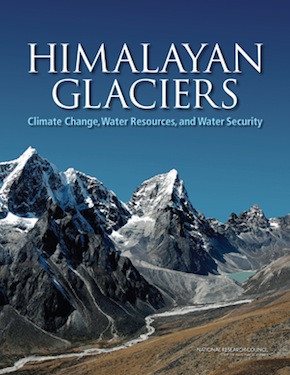California Drought: Snowpack Inspires Consumers, Worries Water Experts
One week after Governor Arnold Schwarzenegger declared a state-wide drought emergency for California, rangers reported Sierra snowpack levels at 80 percent of normal. While the measurements of this major source of water might seem cause for relief, experts hesitate.
California’s Department of Water Resources reports that reservoir levels in early March average just above 70 percent capacity. But averages can be deceiving. While many of the state’s smaller reservoirs meaure over 90 percent of capacity, its largest contain significantly less: Trinity measures 45 percent; Shasta contains 53 percent; Oroville holds 47 percent; and New Melones reads 52 percent. Don Pedro averages just above half of its capacity.
“Even with the recent rainfall, California faces its third consecutive year of drought and we must prepare for the worst – a fourth, fifth or even sixth year of drought,” warned Schwarzenegger. “This is a crisis, just as severe as an earthquake or raging wildfire.”
Farmers are worried, too. As the state flexes its grip on water allocations to California’s $35 billion agriculture sector, they worry their current attempts to survive — through fallowing, water banking and “Band-Aid” farming, etc. — won’t protect them from demise during what many experts call this “man-made drought.”
“I don’t think the American public has gripped in its gut what could happen,” U.S. Energy Secretary Steven Chu explained to the Los Angeles Times. “We’re looking at a scenario where there’s no more agriculture in California.” But some think the unsustainable birds of industrial agriculture are finally coming home to roost: perhaps the drought can force a more energy-efficient and environmentally friendly farming model on the struggling system, suggests a Reuters report in Condé Nast Portfolio.
Although farmers are altering their techniques for storage and irrigation, moving slowly toward less water-intensive crops, the Pacific Institute’s Peter Gleick believes room for improvement remains. “It’s ironic because I do a lot of international water work and there’s no other place on the planet where, in my opinion, the agricultural sector is so insistent that they can’t do better,” Gleick said.
It seems the battle between cultivators, conservationists and the state’s Congress is far from finished. While the Sierra snowpack giveth and taketh away, legislators face pressure to reduce water to farmers in order to ensure the health of the vital Sacramento-San Joaquin Delta. If they allow too much to be drawn from the ecosystem, they risk endangering the protected delta smelt and other species.
The latest assessment of available water finds most parties slightly more optimistic, reports the Los Angeles Times. With adequately heavy snowfall and rain in February and March, the state expects to grant Southern California five percent more of the resource than anticipated. Still, they warn, deliveries will not measure up to average: the mere 20 percent offered now falls far below the normal 70 percent.
James Powell, author of Dead Pool, a book about the Colorado River Basin and water politics in the American West, believes the prevailing attitude among his fellow Californians prevents them from implementing long-term solutions to the crisis.
Both Powell and the Pacific Institute cite the West’s crumbling water infrastructure and point out that building new dams and reservoirs unfortunately never creates more water — especially when there is already less than needed.
“Since we’re using as much as we possibly can get, there is no surplus, we would have to have amazing snowfalls for 15 or 25 years and that’s just highly unlikely to happen,” Powell told Circle of Blue. “But we just can’t break out of this short term thinking. ”
“Even with an above average flow of the river, the level of the reservoirs stayed almost exactly the same. That proves we’re using every drop there is. If we get a little bit more, we’ll use that too. We won’t store it,” said Powell. “That’s the other issue. If we get more water in California, we’re not going to fill the reservoirs; we’re going to build a new subdivision. We always have.”
Read more here, here and here.
Sources: Condé Nast Portfolio, Los Angeles Times, California Department of Water Resources








Leave a Reply
Want to join the discussion?Feel free to contribute!